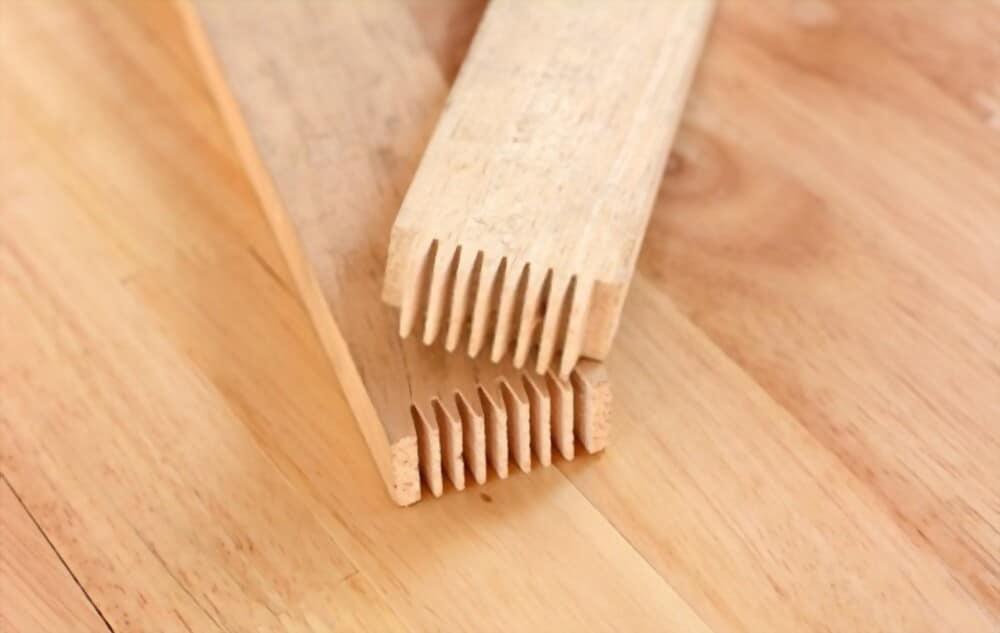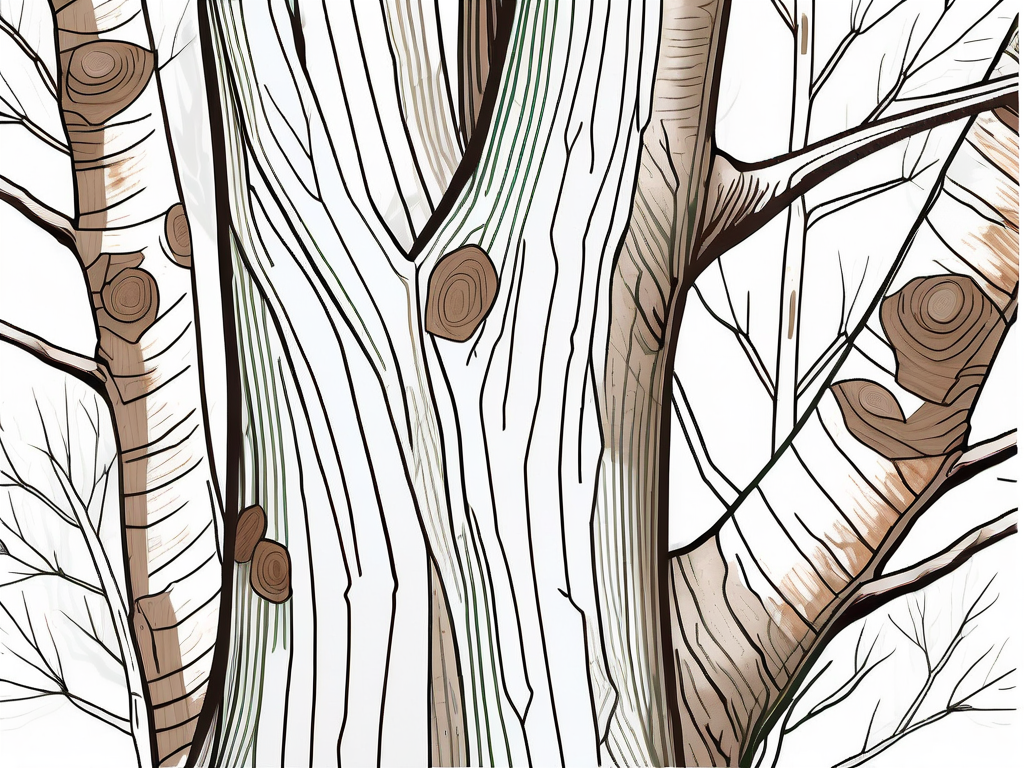What is Rubberwood?
Ever wondered what rubberwood is? This eco-friendly, durable wood is perfect for furniture and decor. Explore its benefits, uses, and why it’s becoming a popular choice for sustainable living.

Rubberwood is a versatile and sustainable material that has gained popularity in various industries, particularly in furniture production. In this comprehensive guide, we will delve into the basics of rubberwood, its production process, characteristics, environmental impact, and various uses. Let's gain a deeper understanding of rubberwood and its significance in the global market.
Understanding the Basics of Rubberwood
Rubberwood, also known as parawood or Hevea brasiliensis, is a type of hardwood extracted from the rubber tree. It is classified as a white wood due to its light-colored appearance, and despite its name, it does not have any rubbery texture or composition. Rubberwood gained recognition for its sustainability features and its ability to serve as an alternative to traditional hardwoods.

One of the key characteristics of rubberwood is its eco-friendly nature. Unlike other hardwoods that are harvested solely for timber, rubberwood comes from mature rubber trees that have ceased latex production. This sustainable practice not only reduces waste but also helps in conserving forests by utilizing trees that have reached the end of their natural life cycle.
Defining Rubberwood
Rubberwood is derived from the rubber tree's matured, non-latex bearing timber. As the rubber tree reaches the end of its latex-producing life cycle, it is felled and converted into rubberwood. This sustainable approach ensures that rubberwood does not contribute to deforestation as it repurposes trees that would otherwise be discarded.
Furthermore, rubberwood is highly versatile in its applications. It is commonly used in furniture manufacturing, flooring, and even in the production of wooden toys. Its light color and smooth grain make it an ideal choice for staining and finishing, allowing for a wide range of aesthetic possibilities in design and decor.
Origin and Distribution of Rubberwood
The rubber tree is native to the Amazon basin but is predominantly cultivated in Southeast Asian countries such as Malaysia, Indonesia, Thailand, and Vietnam. These regions offer favorable climatic conditions for rubber tree plantations, making them primary sources of rubberwood.
In addition to its environmental benefits, the growth of rubberwood plantations in Southeast Asia has also provided economic opportunities for local communities. The cultivation and processing of rubberwood create jobs and support livelihoods in rural areas, contributing to the socio-economic development of these regions.
The Production Process of Rubberwood
Understanding the production process of rubberwood sheds light on the efforts involved in transforming raw rubber tree timber into a versatile and functional material.
Rubberwood, also known as parawood, is an eco-friendly and sustainable option for furniture and construction due to its unique characteristics. The production process of rubberwood starts long before the harvesting stage, with rubber trees being carefully cultivated in plantations for several years before reaching maturity.
Harvesting Rubberwood
When the rubber trees reach the end of their latex-generating capacity, they are harvested. During this stage, the trees are carefully selected based on their maturity level, ensuring that only the highest quality timber is chosen for processing.
Harvesting rubberwood is a labor-intensive process that requires skilled workers to cut down the trees with precision to maximize the yield of usable timber. Once felled, the logs are transported to processing facilities to begin the next phase of the production process.

Processing and Manufacturing Rubberwood
The harvested rubberwood logs undergo a rigorous processing and manufacturing process to remove impurities and enhance its durability. The timber is typically kiln-dried to remove moisture, making it more resistant to warping and shrinking. Once dried, the rubberwood is then cut, shaped, and assembled according to specific product requirements.
After the initial shaping and cutting, the rubberwood pieces are meticulously inspected for quality control purposes. Any defects or irregularities are addressed to ensure that the final products meet industry standards for strength and aesthetics. The versatility of rubberwood allows it to be crafted into a wide range of products, from sturdy furniture pieces to intricate decorative items, showcasing the adaptability of this sustainable material.
Characteristics of Rubberwood
Understanding the physical properties and characteristics of rubberwood is essential in evaluating its suitability for various applications.
Rubberwood, also known as parawood, is derived from the rubber tree (Hevea brasiliensis) and is considered an eco-friendly alternative to traditional hardwoods. The trees used for rubberwood are typically harvested after they have completed their latex-producing cycle, making it a sustainable choice for furniture and other wood products.
Physical Properties of Rubberwood
Rubberwood possesses a medium density and is characterized by its light coloration, which ranges from pale yellow to light brown. It has a relatively straight grain pattern and a smooth texture. Additionally, rubberwood has a high shock resistance and excellent strength-to-weight ratio, making it suitable for various structural applications.
Due to its light color, rubberwood is highly receptive to different finishes and stains, allowing for versatile design options. Its smooth texture also makes it ideal for intricate carving and detailing, adding to its aesthetic appeal in furniture making.
Durability and Maintenance of Rubberwood
Although rubberwood is not as dense as some traditional hardwoods, it offers sufficient durability for everyday use. Proper maintenance, including regular dusting and occasional polishing, can help maintain its appearance and longevity. However, it is important to avoid exposing rubberwood to excessive moisture, direct sunlight, or extreme temperatures, as these factors can negatively impact its durability over time.
When cared for properly, rubberwood furniture can last for many years, showcasing its natural beauty and versatility. Its durability and unique characteristics make it a popular choice for both residential and commercial applications, providing a sustainable and stylish option for interior design projects.
Environmental Impact of Rubberwood
One of the key reasons for rubberwood's popularity is its sustainability compared to other hardwood alternatives. Let's explore the environmental impact of rubberwood in greater detail.

Sustainability of Rubberwood
Unlike traditional hardwoods obtained from natural forests, rubberwood is an environmentally friendly option. It comes from rubber plantations specifically established for latex production, reducing the need for deforestation. By utilizing rubberwood, we can minimize environmental impact and promote the preservation of natural forests.
Rubberwood and Deforestation
The cultivation of rubber trees for latex production provides a sustainable alternative to the detrimental effects of deforestation. By repurposing the timber from latex-bearing trees, rubberwood contributes to reducing the demand for hardwood from natural forests, preserving biodiversity, and mitigating climate change.
Furthermore, the process of harvesting rubberwood is carefully managed to ensure minimal environmental impact. Rubber trees have a productive lifespan of about 25-30 years for latex production. Once they cease to produce latex efficiently, they are harvested to make space for new trees. This sustainable harvesting practice ensures that the rubberwood industry operates in harmony with nature, maintaining a healthy ecosystem.
Carbon Sequestration and Rubberwood Plantations
In addition to its sustainable sourcing, rubberwood plantations play a crucial role in carbon sequestration. Rubber trees absorb carbon dioxide from the atmosphere during photosynthesis, helping to mitigate the effects of greenhouse gases. This carbon storage continues even after the trees are harvested, as rubberwood products can store carbon for an extended period, further contributing to climate change mitigation efforts.
Uses of Rubberwood
Rubberwood finds application in various industries, primarily in furniture making. Its versatility and sustainable nature make it an ideal choice for both manufacturers and consumers. Let's explore some of the most common uses of rubberwood.
Rubberwood in Furniture Making
Due to its desirable properties and affordability, rubberwood is a popular material in the furniture industry. It is commonly used for bed frames, tables, chairs, cabinets, and other household furniture. The light coloring of rubberwood allows for easy staining or painting, allowing manufacturers to cater to different design preferences.
Moreover, rubberwood's eco-friendly nature is a significant factor in its popularity. As a byproduct of the latex industry, rubberwood provides a sustainable alternative to traditional hardwoods, reducing environmental impact and promoting responsible forestry practices.
Other Industrial Uses of Rubberwood
Beyond furniture production, rubberwood has found its way into other industries as well. Its shock resistance and strength make it suitable for construction, flooring, and even toy manufacturing. Additionally, rubberwood is also used in the production of veneers and plywood, where its stability and consistent quality prove advantageous.
In the construction sector, rubberwood is utilized for beams, trusses, and support structures due to its load-bearing capabilities and resistance to warping. The flooring industry values rubberwood for its durability and natural beauty, often used in high-traffic areas for its ability to withstand wear and tear while maintaining an attractive appearance.
Final Thoughts
Rubberwood is an exceptional material that offers a sustainable and versatile alternative to traditional hardwoods. Its unique characteristics, production process, and wide range of applications make it a viable choice in various industries. Understanding the basics of rubberwood and its positive environmental impact allows us to make informed decisions as consumers and contributes to a greener and more sustainable future. Be sure to check out all of the products on Spoken that contain rubberwood.
Quick facts
Is rubberwood a good quality wood?
Rubberwood is considered a good quality wood for furniture and household products. It's durable, eco-friendly, and resistant to fungus, bacteria, and mold when properly treated. Its affordability and versatility make it a popular choice for various applications, though it may not be as hard or long-lasting as some premium woods like oak or maple.
What are the disadvantages of rubber wood?
Disadvantages of rubberwood include its susceptibility to moisture damage if not properly sealed and its relatively soft nature compared to harder woods like oak or walnut. Over time, rubberwood may warp or crack if exposed to extreme humidity. Additionally, while it’s treated to resist pests and fungi, untreated rubberwood can be vulnerable to infestations.
Which is better, oak or rubberwood?
Oak is generally considered better than rubberwood in terms of durability, hardness, and longevity. Oak is a denser hardwood, making it more resistant to wear and tear. However, rubberwood is a more eco-friendly and affordable option, offering good durability at a lower price point. The choice depends on your budget, style preferences, and how you plan to use the furniture.
Is rubberwood furniture toxic?
Rubberwood furniture is not toxic. It is a sustainable byproduct of the rubber industry, and once processed, rubberwood is treated to remove any harmful substances, including latex allergens. It's a safe option for indoor use, especially when properly finished with non-toxic coatings or sealants.
Is rubber wood good for outdoor furniture?
Rubberwood is not ideal for outdoor furniture as it is susceptible to moisture, rot, and insect damage. It performs better indoors where conditions are controlled.
What is the difference between rubber wood and teak wood?
Rubberwood is lighter and more affordable than teak, but less durable and resistant to moisture. Teak is preferred for outdoor use due to its natural oils and strength.
Is rubber wood better than solid wood?
Rubberwood is considered eco-friendly and budget-friendly, but solid wood like oak or maple offers greater durability and longevity, making it preferable for high-use furniture.
What is the difference between engineered wood and rubber wood?
Engineered wood is made from composite materials, offering uniformity and moisture resistance, while rubberwood is natural hardwood known for its sustainability but less water resistance.
Can rubberwood be left outside?
Rubberwood should not be left outside as it lacks the natural resistance to moisture and pests required for outdoor durability. It is best suited for indoor use.

Dane Hurtubise
Co-founder & CEO of Spoken
Dane Hurtubise is the Co-founder & CEO of Spoken. He has led two venture-backed companies and is a two-time Y Combinator alum. Prior to Spoken, Dane sold his previous company, Parklet, to Greenhouse Software where he served as VP of Platform and Partnerships. An avid runner, cyclist, and Pilates enthusiast, Dane holds a BS in Electrical and Computer Engineering from the University of Texas at Austin.
Read more